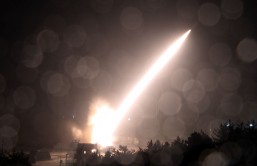Scientists captured the first images of thunder, revealing its unique acoustic signature.
To capture the striking images, a team of researchers artificially triggered lightning and captured the sound waves of the accompanying thunder, Southwest Research Institute reported.
"Lightning strikes the Earth more than 4 million times a day, yet the physics behind this violent process remain poorly understood," said Maher A. Dayeh, a research scientist in the SwRI Space Science and Engineering Division. "While we understand the general mechanics of thunder generation, it's not particularly clear which physical processes of the lightning discharge contribute to the thunder we hear. A listener perceives thunder largely based upon the distance from lightning. From nearby, thunder has a sharp, cracking sound. From farther away, it has a longer-lasting, rumbling nature."
Lightning starts out as a process of electrostatic charges inside of a storm cloud. The charges trigger step leaders, which are veins of electricity that move downwards, leading to a main discharge channel. The channel facilitates almost instantaneous return strokes, which causes the lightning flash that is visible to the human eye. The researchers looked at the power that radiates from different areas of the lightning channel to gain insight into the origins of thunder.
"Thunder and lightning are fascinating, wild, and unpredictable," Dayeh said. "Because of their erratic nature, the phenomena are best studied using triggered events."
The new technique that created the images involved launching a small rocket trailing a grounded copper wire through thunder clouds, providing a conductive channel that creates a predictable pathway for the lightning. The method allowed the researchers to focus their instruments on the discharge channel. Dayeh designed a large array of microphones to capture the acoustic signature of the thunder.
"At first I thought the experiment didn't work," Dayeh said. "The initial constructed images looked like a colorful piece of modern art that you could hang over your fireplace. But you couldn't see the detailed sound signature of lightning in the acoustic data."
When Dayeh looked at the different sound frequency bands, he noticed the images were clear at higher frequencies. In the future, the researchers hopes to look at the probable acoustic signatures of current pulses, step leader branches, and discharge channel zigzags.
The findings will be presented at a joint meeting of American and Canadian geophysical societies.








